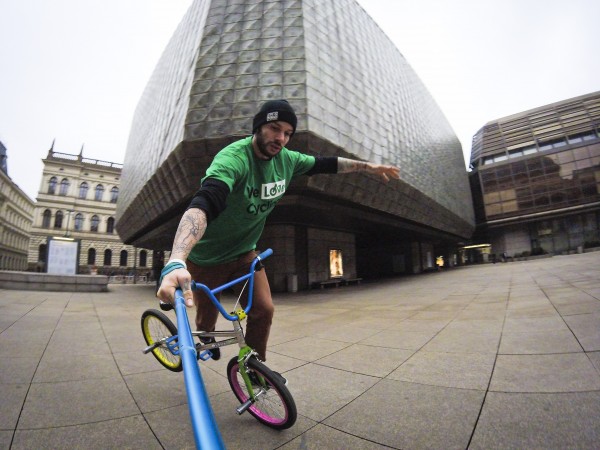1. Know Your Intentions
All BMX bikes are not the same. There are bikes designed specifically for certain types of riding, so knowing what you will use the bike for is very important when selecting a complete. Will your playground be the local skate park, BMX track or your buddy’s backyard ramps? If you aren’t sure which bike is right for which type of riding, then ask your friends who already know their stuff. They may tell you more or even borrow you their own bike so you can find out if you like that particular style or not.
Freestyle/Street: This is perhaps the most common form of BMX riding today. Freestyle riding mainly revolves around riding in skate parks or in the street, and involves tackling ramps and street obstacles.
Dirt Jump: Other forms of freestyle BMX including riding bikes over jumps of dirt or soil and becoming airborne. This style evolved directly from BMX track racing.
Racing: BMX race bikes are built for courses that contain jumps, banked corners and rollers. You need lots of speed, power, workout and sports drinks.
Flatland: My favorite. It’s the waltz of the BMX world and built around balance and control. For this reason, flatland bikes are built geometrically differently to others, for slow–speed tricks on smooth terrain. Prepare for riding in circles in a parking lot for hours.
2. Make It from the Box
Most first-time buyers in the BMX market will opt to buy a complete BMX bike – a bike that’s already fully built and ready to ride, with all BMX parts included. You can also build your own bike from scratch, but that will be much more expensive and as an inexperienced beginner you probably won’t know what parts to choose from.
3. Pick the Proper Size
Small differences in size seem insignificant, but can actually change the feeling of a bike totally. You can find a proper frame for any rider – big or small. If you have the luxury of going to a shop to buy your bike, test out the bike in the street and make sure you feel comfortable on it. It’s better to try out more models to become sure of what you prefer than later regret your hasty choice.
4. Components Are Important
The parts of a bike can make the complete really good, or really bad. It can also make the bike really expensive, or really cheap. So check out all the parts of the bike to see what kind of quality you are getting. Here are some parts you should be looking at:
Small Sprocket
Look for a small sprocket in the front, around 25-30t. With anything much bigger than that, there’s a good chance the bike will be heavy, difficult to trick, and outdated.
Brakes
Many BMX bikes don’t come with brakes at all, but we recommend riding with at least a back brake if you’re just getting involved.
Heavy Duty Rims
Double wall rims, on the outside of the wheel, are a lot more durable than single, and as such will last a lot longer. Single walls dent easily. Doubles don’t.
Sealed Bearings
Unsealed bearings can become loose, which means your bike could need a lot more work over time to keep it running smoothly. If you look for sealed bearings in the front and rear hub, bottom bracket and headset, you’ll be riding clean for much longer.
Pegs
A peg is a tube from steel, one on the end of each wheel axle. For flatland riding, use four knurled aluminum pegs to stand on to manipulate the bike into even stranger positions. In Freestyle BMX, pegs are used for grinding on obstacles. In dirt jump or race, there’s no need for pegs.
5. Look for Weight
A lightweight complete bike usually means it has some good parts on it, and is made from good materials. But in the beginning you don’t need to be afraid of a little heavier bikes. You still have to learn a lot before you can benefit from light bikes. But if you start riding frequently, a lighter bike will help you keep better control over it, and will allow you to ride longer without getting much tired.
6. Get in Love with It
You shouldn’t buy a bike solely because of its color scheme. However, it’s good if you like how it looks because you’re going to spend a lot of time on it, aren’t you?
7. Buy It in a Shop
In online stores you can find great prices. But usually there’s nobody to ask if the bike fits you better than the other. Very often the bikes are out of date. You also have no chance to test them. Another issue is that the shops normally guarantee service maintenance within some period. By bringing in your bike for some routine maintenance, you’ll keep it running smoothly, and you may even learn some tips on how to work on your bike yourself.










